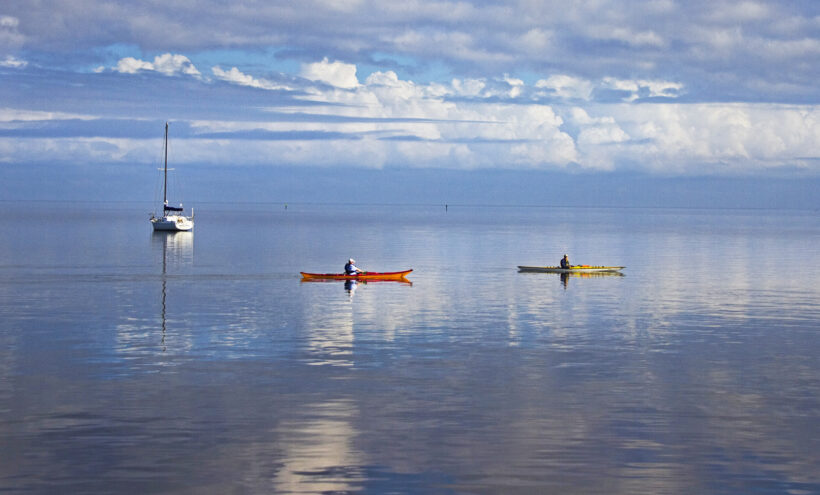Just west of Marion County is Cedar Key, where a visit can take you back to Old Florida.

The charming village of Cedar Key sits on the Gulf of Mexico a little more than an hour’s drive from Ocala. This is a small working fishing village with beautiful scenery, a slow pace, great food, and museums and archaeological sites that share the area’s rich history.
The islands that now make up Cedar Key were originally settled by Native Americans thousands of years ago. Prehistoric village sites show a heavy reliance on seafood and include mounds of shellfish remains from ancient meals. There are interesting exhibits and artifacts at both the Cedar Key Museum State Park on the northern tip of the island and the Cedar Key Historical Society Museum, which is located downtown.
To visit an ancient site, stop by the Shell Mound archaeological site just north of town. It includes picnic areas, a small pier, a boat ramp that is ideal for small skiffs and kayaks, and a walking trail with excellent interpretive panels that allow visitors to see the shell mounds up close.
“Modern” settlement arrived here in 1842 in the form of a U.S. Army fort and depot on what is now Atsena Otie Key (which is the island that sits closest to today’s commercial waterfront). Cedar Key was incorporated in 1869 and, at that time, the town existed on both Atsena Otie Key and the present location. Industries included fishing, harvesting oysters, turpentine production, palmetto fiber brush manufacturing and boat building.
The railroad arrived in 1861, connecting the Gulf to the Atlantic at Fernandina. Cedar Key grew into a major 19th century port and rail terminus. After the Civil War, business boomed with ships and trains opening the island up to the world. Travelers and cargo could arrive by rail, then board a ship with regular routes to Pensacola, Galveston, New Orleans, several ports in Mexico, Honduras, Costa Rica, Panama, Cuba and Venezuela.
In 1884, however, Henry Plant completed a rail line to Tampa that soon eclipsed Cedar Key as a port. Then, in 1896, the “No. 4 Hurricane” devastated the town and resulted in the abandonment of Atsena Otie Key. The two events limited future growth but helped create the quiet village we know today.

Modern industries in Cedar Key include commercial clamming, tourism and recreational fishing. Visitors find beautiful scenery, endless boating and fishing options, world class birding, eco-tourism, seafood restaurants and a handful of unique shops and galleries. The Cedar Keyhole Artist’s Co-op Gallery features works by local artists, such as fine paintings, sculpture, pottery, turned wood and more.
Nature hikes nearby include the Cemetery Point Boardwalk and Trestle Trail. Two major annual events, the seafood festival in October and the art festival in April, are well attended and worth a visit (but expect a crowd).
An online search lists plenty of options for private rental properties, from modest to expansive homes with waterfront views. Unique accommodations can be found at the historic Island Hotel, established in 1859, which includes a restaurant and the quaint Neptune Bar. The waterfront restaurants along Dock Street include plenty of dining options (the author’s favorite being 83 West & 29 North) with some of the freshest seafood in town.
Whether you visit for one day or several, Cedar Key is part of Old Florida that should not be missed. Learn more at cedarkey.org or stop into the Cedar Key Chamber of Commerce on 2nd Street in the heart of town.
Scott Mitchell is a field archaeologist, scientific illustrator and director of the Silver River Museum & Environmental Education Center, located at 1445 NE 58th Ave., Ocala, inside the Silver River State Park. Museum hours are 10am to 4pm Saturday and Sunday. Admission to the park is $2 per person; free ages 6 and younger. To learn more, go to silverrivermuseum.com.






